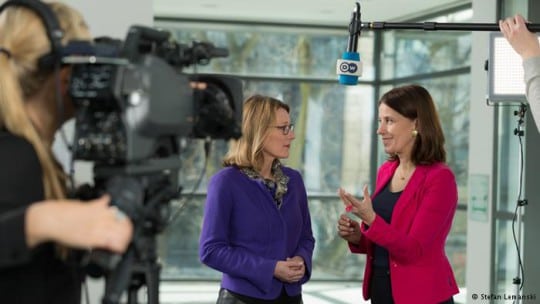
As a former newsman, with more than 30 years in the public relations business (almost 25 years at Burson-Marsteller) I have sat through many client media training sessions before, during and after my tenure at B-M, often finding them not up to the job.
Too often the sessions focused on how to dress, how to sit, message points to work into answers (important, but easier done in a print interview than on TV). What were often missing were the tough questions that might be asked. Thus, on accounts that I managed, after the formal media training sessions, I would conduct my own one-on-one training session.
I would play reporter and ask the toughest question that I could think of. I would emphasize to the client to be confident because the interviewer knew less of the subject than the client. As for message points, we would prioritize which message points were most important and agree on which one or two points to try to work into an answer. I would also tell the client that most interviewers will let you work in a plug.
But most important, I wanted to make certain that the client was not overly apprehensive about being interviewed.
Then we would discuss some nuts and bolts that apply to any interview. Here’s what I tell clients before media interviews:
- Don’t be afraid of the interview.
- Keep in mind that the great majority of reporters are cordial people who are not out to harm you. They just want to get a story that will satisfy their editors and go home to their family.
- Reporters hate when someone misleads or lies to them. Reporters don’t like it when their stories have to be corrected through no fault of their own and because of inaccurate information provided to them.
- Don’t “wing it.” Come prepared with notes regarding the topic.
- If you don’t know the answer to a question, tell the reporter that you’ll get back with an answer.
- An interview is not a legal hearing. It’s okay to tell a reporter that some information is proprietary.
- Just because a reporter puts away a notebook or turns off a tape recorder doesn’t mean the interview is over and you can say anything without it being used.
- If a reporter makes a statement that you do not agree with, say so. Remaining quiet may give the impression that you agree.
- Don’t answer if you are not sure of a reporter’s question. Always ask for a clarification.
- Never say anything negative about an individual or company.
- Don’t stray from the subject of the interview to comment on the day’s news. That might open up a new line of questioning.
- If a print reporter signals that the interview is over but the client wants to provide additional information, it’s okay to ask the reporter for a few more minutes.
- Reporters like facts and figures. Instead of just voicing an opinion, back it up with facts and figures.
- Prior to departing, let the reporter know how you can be contacted if additional information is needed.
- And most important, never lie to a reporter.
Formal media training is important. But its value is lessened when the same formula is used regardless of the client. That’s why I’ve always believed that the account team should play a crucial role in the process and insist that the media trainers not use the “one size fits all” formula.
Arthur Solomon was a senior vice president/senior counselor at Burson-Marsteller, restructuring, managing and playing key roles in some of the most significant national and international sports and non-sports programs. He now consults on public relations projects and is on the Seoul Peace Prize nominating committee.

repeat line 10 about 20 times